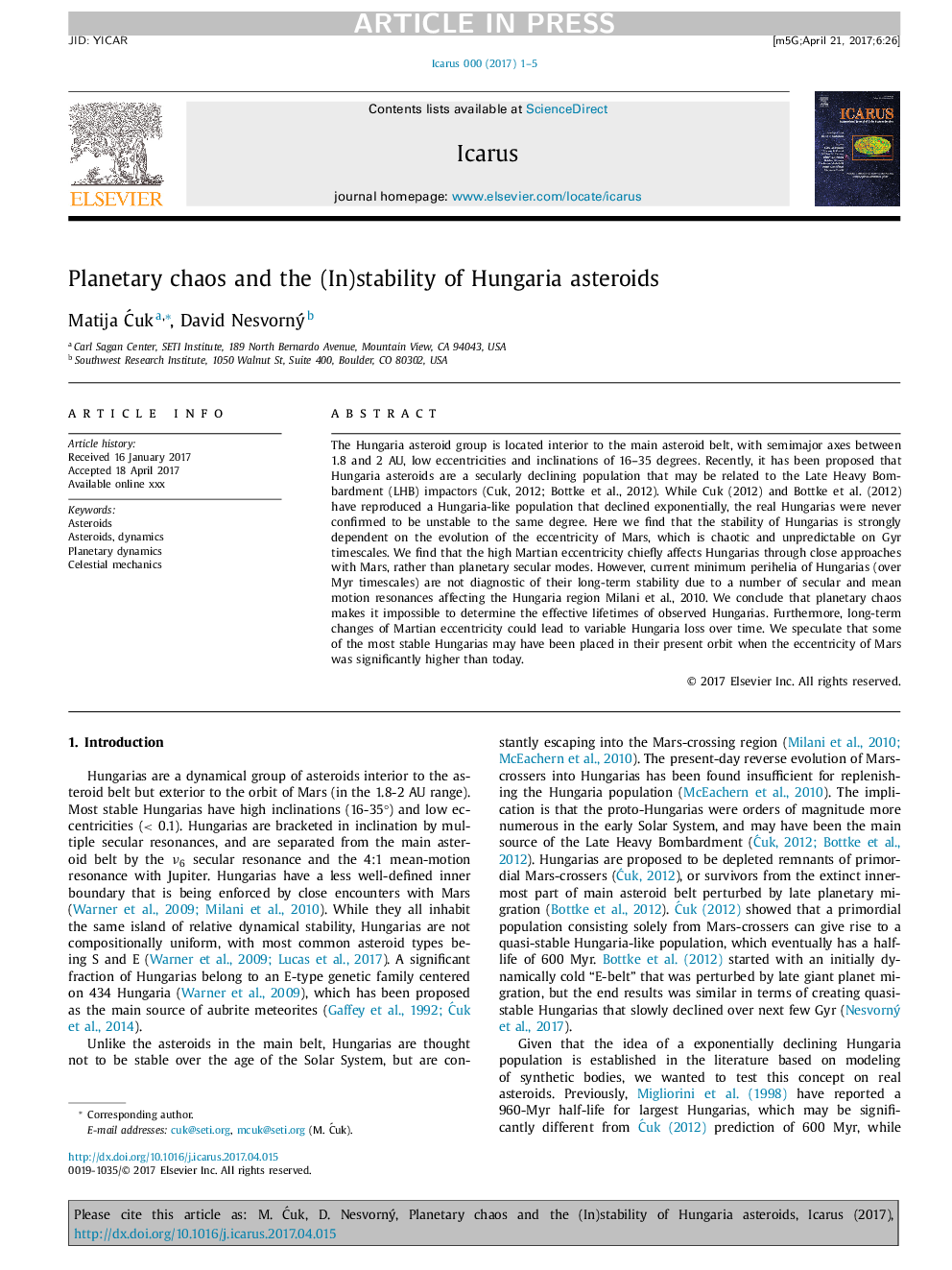| Article ID | Journal | Published Year | Pages | File Type |
|---|---|---|---|---|
| 8134382 | Icarus | 2018 | 5 Pages |
Abstract
The Hungaria asteroid group is located interior to the main asteroid belt, with semimajor axes between 1.8 and 2 AU, low eccentricities and inclinations of 16-35 degrees. Recently, it has been proposed that Hungaria asteroids are a secularly declining population that may be related to the Late Heavy Bombardment (LHB) impactors (Cuk, 2012; Bottke et al., 2012). While Cuk (2012) and Bottke et al. (2012) have reproduced a Hungaria-like population that declined exponentially, the real Hungarias were never confirmed to be unstable to the same degree. Here we find that the stability of Hungarias is strongly dependent on the evolution of the eccentricity of Mars, which is chaotic and unpredictable on Gyr timescales. We find that the high Martian eccentricity chiefly affects Hungarias through close approaches with Mars, rather than planetary secular modes. However, current minimum perihelia of Hungarias (over Myr timescales) are not diagnostic of their long-term stability due to a number of secular and mean motion resonances affecting the Hungaria region Milani et al., 2010. We conclude that planetary chaos makes it impossible to determine the effective lifetimes of observed Hungarias. Furthermore, long-term changes of Martian eccentricity could lead to variable Hungaria loss over time. We speculate that some of the most stable Hungarias may have been placed in their present orbit when the eccentricity of Mars was significantly higher than today.
Related Topics
Physical Sciences and Engineering
Earth and Planetary Sciences
Space and Planetary Science
Authors
Matija Äuk, David Nesvorný,
